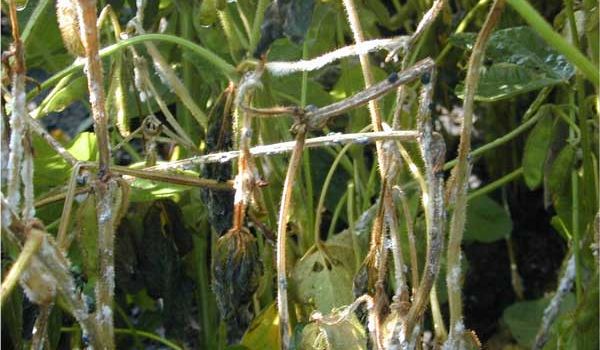The Ugly Truth About White Mold

I’m commonly asked, “what traits should I plant on fields where there’s been white mold”. This is a common misconception and one I want to address head on. White mold infection is an environmental problem, not a varietal one. In other words, the trait does not protect your soybeans from this infection. (Check out this classic blog on why white mold score are misleading).
While there are varietal differences in disease response, most years, even the most susceptible soybeans are not affected and even the best can be hit hard under the right conditions.
Flowering date and wet weather are the determining factors for when a soybean will be infected, and flowering date is affected by maturity and planting date as well. That’s what’s made this year with a late, cold spring and much more moisture than average, the perfect setting for white mold to show up, regardless of the variety.
White Mold Characteristics
- Sclerotia bodies are extremely hardy and are unaffected by weather and soil conditions.
- Sclerotia from previous years can survive in the soil for over five seasons.
- White mold usually develops as a result of wet, cool conditions during flowering. Temperatures between 68 degrees and 78 degrees are ideal for spreading the disease.
- If the soil surface remains wet for at least 10 days, the sclerotia bodies will germinate and develop spores that infect the plants.
- Symptoms may not be visible for up to 4 weeks after infection. At that time, gray or white lesions form on the stems, and the leaves above the infection point will eventually wilt and die.
- Pod fill will be set back, and infected plants may not produce any seed.
- Yield loss can be greater than 15 bu/A in the most severe spots of the field.
- Soybean standability and seed quality may both be reduced. If the plant is flowering and the environmental conditions are right, the soybean has a chance of being infected.
White Mold Management
It is difficult to manage white mold. Environmental factors are the most significant cause for infection, with wet weather being a major factor in disease development. Infection of plants varies from year to year and field to field.
Unfortunately, by the time white mold is visible in the field, it is too late for fungicide application. Preventative measures are the most effective treatments; a fungicide application at the early bloom stage (R2) has shown some benefits in area research trials.
What Can You Do?
Crop rotation is really the best tool in your toolbox. And keep your soybeans off ground previously planted to susceptible crops such as dry beans, sunflowers, canola, or soybeans.
If you discover white mold on your farm, follow these harvest tips:
- Harvest healthy fields before harvesting disease-infested fields so the combine does not transport sclerotia to other fields.
- Be sure to thoroughly clean out the combine at the end of the season.
Questions about your field? I’m happy to help. Email me at agronomy@petersonfarmsseed.com or give me a call at (701) 282-7476.



